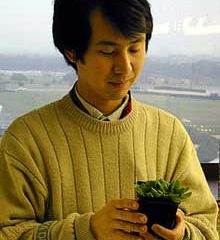Articles and reports from the Life Sciences and chemistry area deal with applied and basic research into modern biology, chemistry and human medicine.
Valuable information can be found on a range of life sciences fields including bacteriology, biochemistry, bionics, bioinformatics, biophysics, biotechnology, genetics, geobotany, human biology, marine biology, microbiology, molecular biology, cellular biology, zoology, bioinorganic chemistry, microchemistry and environmental chemistry.

Exactly fifty years ago, Watson and Crick revealed the structure of DNA, unleashing a scientific revolution. On the anniversary of that momentous discovery, the world’s leading science journal, Nature, will publish new and groundbreaking genetic research by Bangor University scientist, Dr. Isabelle Colson. Isabelle is an expert in evolutionary biology, the study of how life evolves, and for 18 months she was an invaluable part of a Manchester-based team studying mutation in yeast – a seemingly simple

Howard Hughes Medical Institute (HHMI) researches and their colleagues have discovered that escort molecules are required to usher pheromone receptors to the surface of sensory neurons where they are needed to translate chemical cues.
In an interesting twist, the researchers found that the escort molecules belong to a family of proteins, called the major histocompatibility complex (MHC), which plays an important role in the immune system. The researchers speculate that in addition to being

Scientists at the University of Manchester have turned back the evolutionary clock to reveal a hidden mechanism for differentiation between species of the same family, according to an article published in the journal Nature this week. The finding sheds new light on how different species may have arisen and questions the very notion of how we define individual species.
The work, funded by the Biotechnology and Biological Sciences Research Council (BBSRC) and the Wellcome Trust, was c

UCLA chemists report in the Feb. 28 issue of Science a room-temperature chemical method for producing a new form of carbon called carbon nanoscrolls. Nanoscrolls are closely related to the much touted carbon nanotubes — which may have numerous industrial applications — but have significant advantages over them, said Lisa Viculis and Julia Mack, the lead authors of the Science article and graduate students in the laboratory of Richard B. Kaner, UCLA professor of chemistry and biochemistry.

Biochemist Daniel R. Gallie at the University of California, Riverside and his research team of Zhong Chen, Todd Young, Jun Ling, and Su-Chih Chang report in the March 18, 2003, issue of the Proceedings of the National Academy of Sciences (PNAS) that they have developed technology that increases the amount of vitamin C in plants, including grains, by increasing the amount of the enzyme that is responsible for recycling vitamin C. “The ability to increase the level of vitamin C in plant food will enh

Mutants from a lowly weed. That’s where many solutions to maladies – from salt stress in plants to HIV in humans – may lie in wait for scientists to discover.
“I look for mutants. I take a sick plant and find out what’s wrong,” said Dr. Hisashi Koiwa, Texas Agricultural Experiment Station horticulturist.
It’s the Arabidopsis plant, a common weed, that attracts Koiwa and other researchers because of its simple genetic makeup. Scientists have looked at every nook and cranny of the